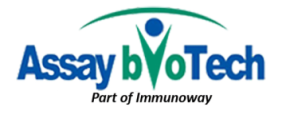Western Blot (WB) – Protocol
Western blot is a commonly used molecular biology technique that analyzes proteins of interest in samples. Cell lysates are generated from cell culture lysis and separated by weight in gel electrophoresis (SDS-PAGE). These proteins are then transferred from gel to membranes where they are blocked and probed with specific antibodies for detection of proteins of interest. With sensitive and specific antibodies, modified proteins or unmodified proteins are easily detected in small samples.
Protocol:
1. Block membrane by incubating 1 hour at room temperature with shaking in Blocking Solution (5% nonfat milk in TBST (50mM Tris, 100mM NaCl, 0.05% Tween-20, pH 7.6).
Note: Use 5% BSA in Blocking Solution for phospho specific antibodies.
2. Dilute primary antibody at the appropriate dilution in Blocking Solution.
3. Incubate the membrane with diluted primary antibody overnight at 40C with agitation.
4. Remove antibody solution. Wash the membrane 3 times for 5-10 minutes each time at room temperature in TBST (50mM Tris, 100mM NaCl, 0.05% Tween-20, pH 7.6) with shaking.
Note: Increasing the concentration of Tween-20 to 0.1% reduces the background and increases the specificity, but it will reduce the sensitivity.
5. Incubate membrane with secondary AP or HRP conjugate diluted (according to manufacturer’s instructions) in Blocking Solution for 1 hour at room temperature with shaking.
6. Wash the membrane as in Step 4.
7. Wash membrane with TBS for 2-5 minutes before proceeding Chemiluminescent Reaction.
8. Prepare and use the Chemiluminescent substrate (for AP or HRP) according to the manufacturer’s instructions.
9. Immediately wrap the membrane and expose to X-ray films for 10 second to 1 hour period. The exposure time may vary according to the mount of antibody and antigen. Or place into imager and adjust accordingly.
Immunohistochemistry (IHC) – Protocol
Immunohistochemistry is an important application of immunestaining in histology. It entails the process of specifically detecting antigens in cells by using the antibodies, which bind to these antigens in the biological tissues. Tissue samples are fixed via paraffin-embedded or formalin-fixed methods and are pre-treated with an antigen retrieval agent. Pre-treatment is essential to improve expression of the antigen by breaking formalin induced antigen cross linking. Slides are then blocked to reduce background and can be stained via direct labelling or indirect assays.
Immunofluorescence (IF)
Immunofluorescence is an immunostaining technique that visualizes antigens in samples using fluorescent microscopy. Samples are fixed carefully with organic solvents and chemical crosslinkers to maintain their cellular integrity as well as sub-cellular architecture. They are then permeabilized to allow immunostaining and then blocked to minimize non-specific binding. Samples are then immunostained with antibodies and via fluorescent reaction targets are visualized in color.
Indirect ELISA
ELISA (enzyme-linked immunoSorbent assay) is an immunoassay that detects antigens via antibody binding that are linked to enzymes to allow for a diverse choice of detection methods. The indirect ELISA detects antigens that have been immobilized onto solid surfaces, commonly in the form of microplates. Once non-specific sites are blocked, primary antibodies and then enzyme conjugated secondary antibodies are incubated to build a complex for detection. Detection methods can include colorimetric, fluorometric, or luminometric depending on the type of secondary antibody conjugation.







